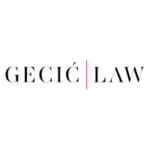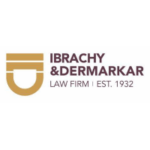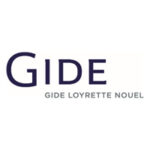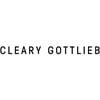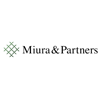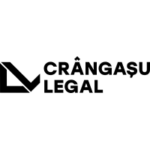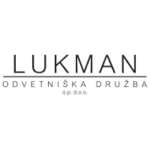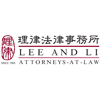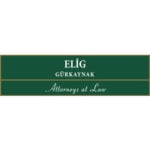-
Overview
(1) Enforcement Agencies
The State Administration for Market Regulation (“SAMR”), as a ministerial-level government agency, is responsible for anti-monopoly administrative law enforcement. The Anti-Monopoly Law Enforcement Bureau II of SAMR is responsible for conducting merger control review, investigating and punishing cases of concentration of undertakings that are illegally implemented, investigating and punishing cases of concentration of undertakings that do not meet the filing thresholds but may exclude or restrict competition, and carrying out merger control review on the concentration of undertakings in the digital economy, and supervising and enforcing the conditions attached to the concentration of undertakings.
According to the Announcement of SAMR on Pilot Entrusting the Merger Control Review of Some Concentration Cases of Undertakings, SAMR has entrusted the market supervision and administration departments of five provinces (municipalities) including Beijing, Shanghai, Guangdong, Chongqing, and Shaanxi to carry out part of the pilot program of merger control review of concentration of undertakings.
(2) Merger control legislation
The merger control legislation in China consists of the Anti-Monopoly Law (“AML”), regulations, and guidelines.
Law
- China’s merger control regime is governed by the AML. The AML became effective on August 1, 2008 and was amended on August 1, 2022. The fundamental rules are: undertakings may, through fair competition or voluntary association, be concentrated lawfully in order to expand their business scale and improve their market competitiveness; where a concentration of undertakings meets the threshold for notification, the relevant undertakings shall make a notification to SAMR in advance; in the absence of such notification, such concentration may not be carried out.
Regulations
- The Provisions of the State Council on the Notification Thresholds of Concentrations of Undertakings (issued in 2008 and amended in 2022) regulates the turnover thresholds of merger control filing. In addition, there are separate rules for the calculation of notification thresholds for the financial industry.
- The Provisions on the Review of Concentrations of Undertakings (“Review Provisions”) issued by SAMR in 2023 consolidate the substantive and procedural provisions of the merger control review; regulate the procedures of merger control notification, merger control review, monitoring and implementing restrictive conditions, and investigating failure to notify etc.
Guidelines
SAMR issued guidelines on:
- the notification of the concentration of undertakings;
- filing documents and preparing materials;
- working guidance;
- simplified cases; and
- the names of concentrations of undertakings.
The merger control guidelines is aimed to restrict and guide law enforcement, maintain unity and continuity in the application of the law and, in the meantime, provide guidance to the undertakings. The guidelines do not have legal binding power on undertakings, however, the guidelines will be respected in practice and followed in the merger notification.
-
Is notification compulsory or voluntary?
In general, merger control notification is mandatory in China. As long as the transaction constitutes a concentration of undertakings and meets the notification thresholds, the concentration of undertakings must be notified before closing. For the concentration of undertakings that do not meet the notification thresholds but where there is evidence proving that the concentration has or may have effect of eliminating or restricting competition, if the SAMR requires the undertakings to make a notification, such a notification is also mandatory.
For the concentration of undertakings that do not meet the notification thresholds, if the transaction has or may have anti-competitive effects, in order to avoid being required by SAMR to notify the concentration of undertakings in the future, avoiding uncertainty in the transaction, the undertakings participating in the concentration may select voluntary notification. Voluntary notification needs to be made prior to closing. After reviewing the notification materials, SAMR may require the undertaking to withdraw the voluntary notification on the basis that the concentration does not meet the notification thresholds.
-
Is there a prohibition on completion or closing prior to clearance by the relevant authority? Are there possibilities for derogation or carve out?
Closing or completion of the transaction is prohibited prior to clearance, if the transaction constitutes a concentration of undertakings and meets the notification thresholds. For the concentration of undertakings that do not meet the notification thresholds, if the transaction has or may have anti-competitive effects, SAMR may require the undertakings to make a notification. If the concentration has not been implemented, the undertakings concerned shall not implement the concentration before they make the notification. If the concentration has been implemented, the undertakings concerned shall make notification within 120 days as of the date of receipt of the written notice from SAMR, and take necessary measures such as suspending the implementation of the concentration to reduce the adverse effects of the concentration on competition.
There is no proceeding in China to apply derogation from SAMR in order to complete the transaction prior to clearance.
In order to accelerate the merger control review process, for instance, the market share of certain business line is too high and may delay the clearance, it is possible to carve out certain assets or subsidiaries in preparation of the transaction. Please note that transactions between the same undertakings are treated as one single transaction if they occur within two years.
The AML and its related regulations do not expressly allow parties to cross-border transactions to carve out Chinese mergers and acquisitions from the global transaction, so that the global completion can be done prior to clearance by SAMR.
-
What types of transaction are notifiable or reviewable and what is the test for control?
In China, transactions which amount to a “concentration” will be notifiable or reviewable if the notification thresholds are met.
A concentration is defined as: (a) a merger of undertakings; (b) an acquisition of a controlling stake in other undertakings by an undertaking through the acquisition of equity or assets; (c) an acquisition of a controlling stake in other undertakings by way of concluding contracts or exercising decisive influence; and (d) establish a joint venture.
According to the Review Provisions, to determine whether an undertaking obtains control over another undertaking or is able to exert decisive influence on another undertaking through a transaction, the following factors shall be considered:
- the purpose of the transaction and future plans;
- the shareholding structure of the other undertaking before and after the transaction and the changes thereof;
- voting matters and voting mechanism of the shareholders’ (general) meeting and other authorities of other undertaking as well as its historical attendance and voting;
- composition and voting mechanism of the board of directors and other decision-making or management bodies of other undertaking as well as its historical attendance and voting;
- appointment and dismissal of senior management personnel of other undertakings;
- for the relationship between the shareholders and directors of the other undertaking, whether there is any exercise of voting right by proxy or any person acting in concert;
- whether there is any material business relationship or cooperation agreement between the undertaking and the other undertaking; and
- other factors that shall be considered.
-
In which circumstances is an acquisition of a minority interest notifiable or reviewable?
The acquisition of minority interests may give rise to a notifiable transaction, depending on whether such acquisition may confer “control” of the target company on the acquirer.
The “control” under the AML is different from that under the Corporation Law. Generally, minority shareholders might exercise joint control over the target company together with the majority shareholders through their veto rights at the shareholders’ meetings or their appointed directors at the board meetings; however, if the minority shareholders’ veto rights in resolutions made at the shareholders’ meetings or the board meetings have exceeded general protections for minority shareholders (i.e., resolutions on any amendment to the company’s articles of association, resolutions on any increase or decrease of registered capital, or resolutions on any merger, division, dissolution or change of corporate form), for example, where they have veto rights on important business matters, such as business plans, budgets, investments, changes of the business scope, or appointments or dismissals of senior officers, it is highly likely that the minority shareholders will possess joint control over the target company. Besides the above factors, one of the other factors to determine whether minority shareholders have control over the target company may be that whether minority shareholders are able to appoint the general manager and the chief financial officer.
It is worth noting that shifting alliance is generally not considered to constitute control in China. In practice, SAMR confirmed in many cases a no-control conclusion of shifting alliance. However, we have also noticed that some case handlers take stricter standards in the consultation, so shifting alliance needs to be analyzed on a case-by-case basis.
-
What are the jurisdictional thresholds (turnover, assets, market share and/or local presence)? Are there different thresholds that apply to particular sectors?
China adopts only the following turnover thresholds:
- during the previous fiscal year, the total global turnover of all the undertakings participating in the transaction exceeds RMB 12 billion, and at least two of these undertakings each had a turnover of more than RMB 800 million within China; or
- during the previous fiscal year, the total turnover within China of all the undertakings participating in the concentration exceeded RMB 4 billion, and at least two of these undertakings each had a turnover of more than RMB 800 million within China.
The turnover thresholds apply to all sectors, but the law may provide different criteria for the calculation of turnover for certain sectors. For example, the Turnover Calculation Method for Concentration of Undertakings in Finance Sector provides detailed guidance on turnover calculation for undertakings engaged in the financial sector, including financial institutions, securities companies, futures companies and fund management companies.
-
How are turnover, assets and/or market shares valued or determined for the purposes of jurisdictional thresholds?
1) The previous fiscal year refers to the previous year on the date of signing the transaction agreement, not the previous year on the date of closing.
2) Turnover within China requires that the product buyers or service recipients of the undertaking are located within China.
3) For the calculation of turnover, the turnover of the undertakings participating in the concentration is the aggregate of the turnover of the following undertakings:
- the undertaking itself;
- subsidiaries directly or indirectly controlled by the undertaking;
- other parent companies that directly or indirectly control the undertaking;
- other sister companies directly or indirectly controlled by the parent company; and
- other undertakings jointly controlled by the above two or more undertakings.
Where there is another undertaking jointly controlled by and between the undertakings that participate in a concentration or between the undertakings that participate in a concentration and those that do not participate in the concentration, the turnover of the undertakings that participate in the concentration shall include the turnover between the jointly controlled undertaking and a third- party undertaking. Such turnover shall be calculated only once and shall be evenly distributed among the undertakings that participate in the concentration with joint control.
If an undertaking participating in a concentration is jointly controlled by two or more undertakings, its turnover shall include that of all the controlling parties.
4) Concentrations between the same undertakings within a two-year period that do not separately trigger the turnover threshold shall be deemed as one transaction. The timing of the concentration occurs will be the time of occurrence of the last concentration and the turnover of the concentrations is aggregated for the purpose of the turnover calculation.
-
Is there a particular exchange rate required to be used to convert turnover and asset values?
Since the RMB is relatively stable, since the AML came into effect, the amount of RMB has been used directly as the notification threshold, without the need to specify a benchmark and floating exchange rates to calculate turnover.
If the financial report of an undertaking is calculated in foreign currency, the exchange rate is generally the arithmetic mean of the central parity rate for the corresponding fiscal year announced by the People’s Bank of China.
-
In which circumstances are joint ventures notifiable or reviewable (both new joint ventures and acquisitions of joint control over an existing business)?
The establishment of a joint venture is subject to merger control if more than two undertakings are determined as having joint control over the joint venture, and meanwhile the notification thresholds are met. If only one undertaking controls such joint venture independently and other undertakings share no control, no concentration of undertakings is constituted.
Other factors will not be considered in determining whether the joint venture is notifiable, such as whether the joint venture is a newly established company, or whether it is an acquisition of joint control over an existing business. In addition, if a joint venture does not constitute a full-function joint venture, and the establishment of such joint venture also needs to be notified in China.
-
Are there any circumstances in which different stages of the same, overall transaction are separately notifiable or reviewable?
Whether a step-by-step transaction will be considered as one single transaction may take into account the following factors: (1) the steps are implemented for the same economic purpose and are certain to occur, and (2) the steps are related to each other and conditional on each other.
Moreover, if an integrated transaction, for whatever reason, is structured or completed in a series of different steps, as long as the integrated transaction is notifiable, the transaction shall be notified at its first step.
-
How do the thresholds apply to “foreign-to-foreign” mergers and transactions involving a target /joint venture with no nexus to the jurisdiction?
The same notification thresholds apply in concentrations implemented by foreign undertakings outside China.
The only difference is that a concentration will be eligible for simplified procedure if (1) the undertakings participating in the concentration establish a joint venture outside the territory of China, and (2) the joint venture conducts no economic activities within China.
-
For voluntary filing regimes (only), are there any factors not related to competition that might influence the decision as to whether or not notify?
The AML does not prohibit undertakings from voluntarily file for merger notification. If the concentration does not meet the notification thresholds but there is evidence to prove that it has or may have the effect of eliminating or restricting competition, the undertakings participating in the concentration may notify the transaction to SAMR for approval.
The voluntary notification may be rejected by SAMR and the undertaking may be required to withdraw the notification on the basis that the transaction does not meet the notification thresholds. If SAMR decides to review the concentration, the factors to be reviewed by SAMR would be identical to those for mandatory notification.
-
What is the substantive test applied by the relevant authority to assess whether or not to clear the merger, or to clear it subject to remedies? Are there different tests that apply to particular sectors?
According to the AML, the substantive test is whether the concentration of undertakings has or may have an effect of eliminating or restricting competition. If the answer is affirmative, SAMR will make a decision to prohibit the concentration of undertakings. Where the involved undertaking is able to prove that the pros of the concentration to competition far outweighs the cons, or such concentration promotes public interests, SAMR may impose certain restrictive conditions on the concentration to mitigate the anti-competitive effect.
The following is the substantive test against which a merger will be assessed:
Horizontal merger
- Market share
- The combined share of the horizontal parties ≥ 50% – it is presumed to have or may have the effect of eliminating or restricting competition;
- 25% ≤ the combined share of horizontal parties < 50% – SAMR shall focus on the transaction, of which 35% ≤ the combined share of horizontal parties < 50% – it is considered to have the effect of eliminating or restricting competition;
- 15% ≤ the combined share of horizontal parties< 25% – it is generally not considered to have the effect of eliminating or restricting competition;
- The combined share of the horizontal parties < 15% – it is presumed that it does not have the effect of eliminating or restricting competition
- HHI
- Low concentration: HHI<1000;
- Moderate concentration: 1000≤HHI≤1800;
- High concentration: HHI>1800
- Unilateral effect – an undertaking eliminates direct or potential competitors through concentration, so that the market power of the concentrated entity is significantly enhanced, and the competition constraints of other undertakings in the relevant market are reduced, and it has the ability and motivation to unilaterally carry out acts such as directly or indirectly raising the price of the relevant commodity, reducing the quality or quantity of the commodity, and weakening innovation;
- Coordination effect – the undertakings eliminate direct or potential competitors through the concentration are more conducive to achieving explicit or implicit coordination behaviors, and has the ability and motivation to directly or indirectly carry out acts such as raising prices, reducing quality, or weakening innovation;
- Potential competition – if the target company is a start-up or an emerging platform, especially when the relevant market concentration is high and the number of competitors is small, it is necessary to focus on assessing whether the concentration may stifle competition and hinder innovation from the aspects of transaction purpose, potential competition, innovation ability, etc., including the impact on the innovation activities of the target company and the impact on the original innovation activities of the acquirer.
- Offsetting factors
- Market entry: Market entry can only be effective in preventing or counteracting the possible adverse effects of concentration on competition if it is possible, timely and sufficient;
- Buyer power: a customer’s ability to reduce prices, improve quality, or “generally play industry participants off one another.”
Vertical merger
- The foreclosure effect – the concentration of undertakings that may result in the direct or potential competitors of the concentrated entity facing rising costs or being subject to unreasonable trading conditions when purchasing upstream raw materials or selling to downstream customers, or the complete inability to obtain upstream raw materials or downstream customers, resulting in the impairment of the ability or motivation of downstream or upstream competitors to participate in competition;
- Access to sensitive information – the concentrated entity obtains sensitive business information of upstream or downstream competitors, which may give the concentrated entity a competitive advantage that other competitors cannot match, and reduce the competitive pressure faced by the concentrated entity in the upstream or downstream;
- Self-preference – After a merger between a platform operator and an on-platform operator, the post-concentration entity may have the ability and motivation to carry out self-preference behavior, such as adjusting its own sales strategy by obtaining sensitive commercial information about pricing, sales volume, etc., or making its own products occupy a more prominent position and become more attractive, thereby harming competition within the platform.
Conglomerate merger
- Leverage effect – Concentrated entities may achieve cross-market leverage of market power by bundling or tying;
- Reduced interoperability – Concentrated entities in the platform economy may also achieve cross-market leverage of market power by reducing interoperability, eliminating or restricting competition.
The above tests apply to all sectors.
-
Are factors unrelated to competition relevant?
Non-competitive factors are not relevant for the decision of SAMR. In general, SAMR only focuses on competition issues in merger control review. Only when conditions are involved or the concentration of undertakings is prohibited, SAMR will comprehensively consider public interests and efficiency factors.
Efficiency considerations
A concentration of undertakings may achieve the effect of economies of scale and economies of scope, raise the competitive pressure of undertakings in the relevant market, reduce product costs and improve product quality and diversification, thereby making a positive impact on the interests of consumers, and such production efficiency can eliminate the unilateral or coordination effect that may result from concentration.
A concentration of undertakings may also foster innovation, decrease in prices, or an increase in the quality of goods, and such innovation efficiency can compensate for the losses caused by price increases to downstream customers that may result from concentration.
Public interest considerations
A concentration of undertakings may be conducive to the healthy development of the national economy, it may promote employment, protect the rights and interests of small and medium-sized undertakings, save energy, protect the environment, disaster relief, etc.
SAMR also needs to ensure that these public interests and efficiency are brought about by the concentration, the benefits can be passed to consumers, and the improvement of efficiency can be proved by the undertaking,
-
Are ancillary restraints covered by the authority’s clearance decision?
In general, SAMR will approve the concentration of undertakings that does not have the effect of eliminating or restricting competition. For concentrations of undertakings that have or may have the effect of eliminating or restricting competition, SAMR will prohibit or impose restrictive conditions in accordance with the AML. The term “have or may have the effect of eliminating or restricting competition” refers to the competition issues brought about by the concentration, and does not include issues such as abuse of dominant market position and monopoly agreements.
The ancillary restraints is not explicitly regulated under the AML or relevant regulations. However, any ancillary agreements not to compete may be reviewed by SAMR. SAMR focus on the following:
- whether such restrictions serve the primary purpose of the concentration;
- whether the restrictions are necessary to achieve the objectives of the concentration (goods/services covered by the non-compete clause, the geographic scope and time limit);
- whether the restrictions are targeting undertakings participating in the concentration (i.e. usually joint ventures) or the target company; and
- whether the restrictions are independent ones or ancillary to the concentration.
-
For mandatory filing regimes, is there a statutory deadline for notification of the transaction?
The law does not provide a specific deadline for notification. Normally parties will file for merger notification as soon as the transaction documents have been executed, but as long as the parties refrain from completing the concentration before clearance, they are free to choose when to notify.
In practice, completing a concentration includes but is not limited to completing the registration of changes in shareholders or rights, appointing senior management personnel, actually participating in business decision-making and management, exchanging sensitive information with other undertakings, and substantively integrating business, etc.
-
What is the earliest time or stage in the transaction at which a notification can be made?
In general, the notification can only be filed after the execution of the transaction documents and before the closing. For the acquisition of a listed company in the form of a public offer, the announced report on the acquisition by offer can be regarded as a signed transaction document.
A party can file the notification prior to signing a definitive agreement. However, SAMR may not accept the notification until the parties have provided the formal executed transaction documents.
Under very exceptional circumstances, SAMR would also accept the notification without the executed definitive agreement. In order to ask SAMR to waive the requirement of the executed definitive agreement, sufficient evidence needs to be submitted to prove that the executed transaction agreements cannot be submitted due to mandatory legal requirements of China or other jurisdictions or any other legitimate reasons. In such a situation, the notification could be filed with the relevant memorandums, framework agreements, draft agreements or tender offers, accompanied by the main terms and conditions of the transaction at the time of submission, instead of the executed definitive agreement.
Once the definitive agreement is executed, the undertakings should provide it to SAMR without delay and point out all differences compared with previously submitted materials. In case such differences may have a major impact on the review and decision of SAMR, the undertakings should notify SAMR immediately, update materials or resubmit.
-
Is it usual practice to engage in pre-notification discussions with the authority? If so, how long do these typically take?
In general, the notification can only be filed after the execution of the transaction documents and before the closing. For the acquisition of a listed company in the form of a public offer, the announced report on the acquisition by offer can be regarded as a signed transaction document.
A party can file the notification prior to signing a definitive agreement. However, SAMR may not accept the notification until the parties have provided the formal executed transaction documents.
Under very exceptional circumstances, SAMR would also accept the notification without the executed definitive agreement. In order to ask SAMR to waive the requirement of the executed definitive agreement, sufficient evidence needs to be submitted to prove that the executed transaction agreements cannot be submitted due to mandatory legal requirements of China or other jurisdictions or any other legitimate reasons. In such a situation, the notification could be filed with the relevant memorandums, framework agreements, draft agreements or tender offers, accompanied by the main terms and conditions of the transaction at the time of submission, instead of the executed definitive agreement.
Once the definitive agreement is executed, the undertakings should provide it to SAMR without delay and point out all differences compared with previously submitted materials. In case such differences may have a major impact on the review and decision of SAMR, the undertakings should notify SAMR immediately, update materials or resubmit.
-
What is the basic timetable for the authority’s review?
The following are the phases of review in relation to an antitrust merger notification:
Phase I of review takes a maximum of 30 calendar days (from the date on which SAMR informs applicant(s) in writing that the filing is formally accepted).
Phase II of review takes a maximum of 90 calendar days. SAMR will inform the applicant(s) in writing if the review period is extended from Phase I to Phase II.
SAMR has discretion to move the filing into a further extended phase of review for a maximum of 60 calendar days, provided that:
- the applicant(s) agree(s) to extend the time limit for the review;
- the documents submitted by the applicant(s) are inaccurate and require further verification; or
- the circumstances surrounding the transaction have changed significantly after notification by the applicant(s).
If SAMR fails to make a determination at the expiry of each set period of time as stated above, the parties may execute the transaction.
-
Under what circumstances may the basic timetable be extended, reset or frozen?
According to AML and Review Provisions, SAMR may decide to suspend the calculation of the merger control review period and notify the undertakings involved in writing if any of the following circumstances occurs:
“stop the clock” Launch Conditions Recovery Conditions The undertakings fail to submit any document or material as required, resulting in the review unable to proceed; SAMR shall notify the undertaking in writing to make supplementation or correction within a prescribed time limit. If the undertaking fails to make supplementation or correction within the prescribed time limit, the SAMR may decide to suspend the calculation of the review period.
After the undertaking submits the documents and materials as required, the calculation of the review period shall continue. Any new circumstance or new fact emerges which has a material impact on the review of the concentration of undertakings, and if it is not verified, the review will not be able to proceed; or SAMR may decide to suspend the calculation of the review period. If it is verified that the review can be carried out, the calculation of the review period shall continue. The restrictive conditions to be placed on the concentration of undertakings need to be further evaluated, and a request for suspension is made by the undertakings. SAMR may decide to suspend the calculation of the review period if it deems necessary. Upon completion of the evaluation of the commitment plan on restrictive conditions, the calculation of the review period shall continue. From the day when the circumstance that caused the suspension of the calculation of the merger control review period disappears, the review period shall resume running, which shall be notified to the undertakings in writing by SAMR.
-
Are there any circumstances in which the review timetable can be shortened?
The notification form for the simplified procedure is shorter than the form for the general procedure, and requires less information, and the approval process is faster. Merger control review subject to simplified procedure can usually be approved in the Phase I (less than 30 calendar days), and the “stop the clock” rules does not apply to simplified procedure.
The simplified procedure is applicable to the following situations:
- Horizontal mergers where the collective market share of all undertakings is less than 15%.
- Vertical mergers where the market share of each of the operators concerned in the concentration in each of the relevant upstream and downstream markets is less than 25%.
- Mergers that are neither horizontal nor vertical, and where the market share of each of the operators concerned in the concentration in each of the markets is less than 25%.
- Off-shore joint ventures which do not engage in any business operations in China.
- Acquisitions of off-shore targets which do not engage in any business operations in China.
- A reduction of the number of existing controlling shareholders where a joint venture jointly controlled by two or more operators is controlled by one or more existing operators as a result of the concentration.
Despite meeting the above criteria, a notification may still be ineligible for a simplified procedure due to reasons such as the relevant market being difficult to define, or if the concentration may adversely affect market entry, technology development, consumers or national economic development.
In addition, the notifying parties, regardless of what notification procedure applies, may consider submitting an urgency letter to SAMR. In the urgency letter, the undertakings can explain the significant pressure encountered by them if the transaction could not be closed by some certain time. In practice, SAMR will often accommodate such request and expedite its review where possible.
-
Which party is responsible for submitting the filing?
The party acquiring control shall be responsible for making the notification.
Specifically, for a concentration of undertakings implemented in the form of a merger, all the parties participating in the merger shall make the notification; for a concentration of undertakings in other forms, the undertaking that has obtained control shall make notification, and the other undertakings shall cooperate. Moreover, if there are two or more undertakings who are obliged to notify, they could agree that one of them is responsible for making the notification, or they can jointly make the notification. However, if the undertaking that has agreed to make the notification fails to do so, the aforementioned agreement shall not exempt the other undertakings’ legal liability for failing to notify the concentration in accordance with the law.
In addition, if the notification obligator fails to make the notification of a concentration, the other undertakings participating in the concentration may propose to make the notification.
-
What information is required in the filing form?
Under normal procedure, the following information and documents are required:
- Corporate related information: basic corporate information of undertakings participating in the concentration (including business scope, information regarding subsidiaries or affiliates, etc.), the notifying party’s identity document or company registration evidence, power of attorney (if applicable), declaration of authenticity of information, compliance statement, audited financial statements.
- Transaction related information: executed transaction agreement, introduction of the transaction, background, motive and economic rationality of this transaction.
- Competition analysis: definition of the relevant market, market shares of undertakings participating in the concentration and main competitors in each relevant market, competition analysis on the transaction’s impact on each relevant market, supply and demand structure, main customers and suppliers, market entry barriers and potential entrants, efficiency generated by the concentration, etc.
Under simplified procedure, the following information is not required: supply and demand structure, main customers and suppliers, market entry barriers and potential entrants of each relevant market, efficiency generated by the concentration, etc.
-
Which supporting documents, if any, must be filed with the authority?
Normally the following documents should be submitted to SAMR:
- The notifying party’s identity document or company registration evidence.
- A power of attorney signed by the notifying party, if the party has appointed an agent to file on its behalf (usually a law firm);
- A declaration of authenticity of information signed by the undertakings participating in the concentration.
- The executed transaction agreement, such as shares or assets purchase agreement, and joint venture agreement.
- Audited financial statements of undertakings participating in the concentration.
-
Is there a filing fee?
There is no filing fee under China’s merger control regime.
-
Is there a public announcement that a notification has been filed?
For cases subject to a simplified procedure, SAMR will release a Public Notice Form which includes an introduction of the deal and the reasons for applying a simplified procedure on its website during the review period. See https://www.samr.gov.cn/fldes/ajgs/jyaj/.
For cases prohibited or cleared with conditions, SAMR will publish its decision, which includes the review timetable, the analysis SAMR made, and the supplementary conditions, if any. See https://www.samr.gov.cn/fldes/tzgg/ftj/.
For non-conditionally cleared cases, SAMR will publish a list which includes the names of these deals and the dates of approval on a weekly basis. See https://www.samr.gov.cn/fldes/ajgs/wtjjz/.
-
Does the authority seek or invite the views of third parties?
For the notification subject to simplified procedure, SAMR will invite third parties’ views during the 10-day public notice.
For the notification subject to general procedure, SAMR normally will seek views from relevant government authorities (for example, the Ministry of Industry and Information Technology), industry associations, other undertakings and consumers of the relevant market(s) where needed.
For the transactions which may be attached with conditions, SAMR will conduct a market test on the remedy plan proposed by the notifying party, and will seek views from relevant government authorities, industry associations, other undertakings and consumers of the relevant market(s) where needed.
-
What information may be published by the authority or made available to third parties?
Notifying parties are requested to provide both confidential and public versions of the notification form submitted to SAMR. The public version often serves as the basis for opinion-soliciting purposes, i.e. SAMR may provide the non-confidential notification or relevant sections of it to government authorities, industry associations, other undertakings and consumers to consult their views.
-
Does the authority cooperate with antitrust authorities in other jurisdictions?
As of 2023, SAMR has signed 59 cooperation documents with anti-monopoly law enforcement agencies in 35 countries and regions including the United States, the European Union, Russia, the United Kingdom, Japan, South Korea, Brazil, etc., and agreed on the content and methods of cooperation, and established a normalized cooperation mechanism. Regularly carry out cooperation activities such as the China-US Antitrust High-level Dialogue, China-EU Competition Policy Week, and the BRICS Competition Conference to exchange work progress, coordinate law enforcement positions, and jointly maintain fair competition in the international market.
In May 2019, SAMR and the European Union’s Directorate-General for Competition signed the Practical Guidelines on Investigation and Cooperation in Antitrust Cases, which established a framework for cooperation in monopoly agreements and abuse of market dominance cases between the two parties.
-
What kind of remedies are acceptable to the authority?
To mitigate a concentration’s potential adverse impact on competition in the relevant market, the notifying party may propose remedial measures to SAMR in exchange for a clearance decision with restrictive conditions. The types of restrictive conditions may include:
- Structural conditions, such as divesture of tangible assets, intellectual property and other intangible assets or related interest;
- Behavioral conditions, such as opening up network or platform and other infrastructure, licensing key technologies (including patents, know-how or other intellectual property rights), terminating exclusive agreements; and
- Hybrid conditions combining structural and behavioral conditions.
-
What procedure applies in the event that remedies are required in order to secure clearance?
Where SAMR raises competition concerns to the undertakings participating in the concentration, the parties will be obliged to prepare and submit remedy proposals to SAMR to address the competition concerns. If necessary, the parties may voluntarily propose remedies before SAMR’s expressing competition concerns.
SAMR negotiates with the parties on the restrictive conditions proposed, assess the effectiveness, feasibility and timeliness of the proposals, and inform the parties of the assessment results. In the process of its evaluation, SAMR may bring it to market test and solicit opinions from stakeholders such as government authorities, industry associations, other business operators and consumers by means of questionnaires, organizing hearings, organizing relevant experts to conduct feasibility studies.
The parties may revise remedy proposals subject to market test results and a final plan shall be submitted to SAMR within 20 calendar days prior to the deadline of the further review phase.
SAMR will publish its conditional clearance decision on its official website, which includes the final remedy commitments of the parties accepted by SAMR.
-
What are the penalties for failure to notify, late notification and breaches of a prohibition on closing?
Pursuant to Article 58 of the AML, if the undertakings fail to seek clearance in relation to a notifiable concentration, they could face the following sanctions:
If the concentration of undertakings has or may have an effect of excluding or limiting competition
- order it to end the concentration;
- dispose of the shares or assets or transfer the undertaking within a time limit, or take other necessary measures to restore its status to the pre-concentration state; and
- impose on it a fine of not more than ten percent of its last year’s sales revenue;
If the concentration of undertakings does not have an effect of excluding or limiting competition – impose on it a fine of not more than RMB 5 million.
To determine whether the concentration of undertakings has or may have an effect of excluding or limiting competition, the following factors will be taken into account:
- the purpose of concentration of undertakings;
- the market shares of the undertakings involved in the concentration and their controlling power over the market;
- the degree of concentration in the relevant market;
- the impact of the concentration of undertakings on market entry and technological advancement;
- the impact of the concentration of undertakings on consumers and other stakeholders;
- the impact of the concentration of undertakings on the development of national economy; and
- other factors which affect the market competition and the SAMR deems necessary to consider.
If there is evidence that the main purpose of the concentration is to eliminate or restrict competition, SAMR is inclined to believe that the concentration has or may have the effect of eliminating or restricting competition, unless the undertaking can prove that the concentration does not have or may have the effect of eliminating or restricting competition. For example, if Company A’s internal documents evaluating the acquisition show that “through this acquisition, we can eliminate the threat of competition from Company B’s product and gradually remove B from the market after closing, thereby consolidating A’s control over the market.” Such evidence may prove the transaction has the effect of eliminating or restricting competition. The consequence is that the fine is not caped within RMB 5 million but ten percent of undertakings’ last year’s sales revenue.
-
What are the penalties for incomplete or misleading information in the notification or in response to the authority’s questions?
If the notifying party conceals relevant information or submits false notification materials, SAMR may not file the case or may revoke the case, and impose :
- a fine of 1% of the previous year’s sales on the notifying party;
- a fine of less than RMB 1,000,000 if there is no sales in the previous year or the sales are difficult to calculate; and/or
- a fine of less than RMB 500,000 on individuals.
-
Can the authority’s decision be appealed to a court?
Pursuant to Article 65 of the AML, undertakings that are not satisfied with a clearance decision of SAMR in respect of merger control may seek a review of the decision (i.e., administrative review) by SAMR.
Undertakings who are dissatisfied with the administrative review decision of SAMR may bring administrative lawsuits before the courts (i.e., judicial review).
-
What are the recent trends in the approach of the relevant authority to enforcement, procedure and substantive assessment
In 2023, 797 cases of concentration of undertakings were reviewed by SAMR, and 782 cases were unconditionally approved, accounting for more than 98%. 4 cases of concentration of undertakings were approved with restrictive conditions. Unconditionally approved 16 concentration of undertakings involving internet platform.
In 2023 SAMR continues to improve merger control review capabilities. SAMR issued relevant work manuals and management measures, and strengthen guidance and norms for the merger control review among five pilot provincial administration for market regulations. Relying on the enterprise registration system, improve the anti-monopoly compliance risk warning mechanism for concentration of undertakings, expand the reminder scenarios, and improve enterprises’ awareness and ability to notify the concentration of undertaking.
In 2023 the merger control review is more standardized and efficient. SAMR has launched the merger control case system and business database, it optimized the online system of concentration of undertakings, further shorten the review time and improve the review efficiency.
-
Are there any future developments or planned reforms of the merger control regime in your jurisdiction?
Guidelines for the review of horizontal concentrations of undertakings is likely to be issued in 2024, and guidelines for the review of non-horizontal concentrations of undertakings is proposed to be issued in 2025.
China: Merger Control
This country-specific Q&A provides an overview of Merger Control laws and regulations applicable in China.
-
Overview
-
Is notification compulsory or voluntary?
-
Is there a prohibition on completion or closing prior to clearance by the relevant authority? Are there possibilities for derogation or carve out?
-
What types of transaction are notifiable or reviewable and what is the test for control?
-
In which circumstances is an acquisition of a minority interest notifiable or reviewable?
-
What are the jurisdictional thresholds (turnover, assets, market share and/or local presence)? Are there different thresholds that apply to particular sectors?
-
How are turnover, assets and/or market shares valued or determined for the purposes of jurisdictional thresholds?
-
Is there a particular exchange rate required to be used to convert turnover and asset values?
-
In which circumstances are joint ventures notifiable or reviewable (both new joint ventures and acquisitions of joint control over an existing business)?
-
Are there any circumstances in which different stages of the same, overall transaction are separately notifiable or reviewable?
-
How do the thresholds apply to “foreign-to-foreign” mergers and transactions involving a target /joint venture with no nexus to the jurisdiction?
-
For voluntary filing regimes (only), are there any factors not related to competition that might influence the decision as to whether or not notify?
-
What is the substantive test applied by the relevant authority to assess whether or not to clear the merger, or to clear it subject to remedies? Are there different tests that apply to particular sectors?
-
Are factors unrelated to competition relevant?
-
Are ancillary restraints covered by the authority’s clearance decision?
-
For mandatory filing regimes, is there a statutory deadline for notification of the transaction?
-
What is the earliest time or stage in the transaction at which a notification can be made?
-
Is it usual practice to engage in pre-notification discussions with the authority? If so, how long do these typically take?
-
What is the basic timetable for the authority’s review?
-
Under what circumstances may the basic timetable be extended, reset or frozen?
-
Are there any circumstances in which the review timetable can be shortened?
-
Which party is responsible for submitting the filing?
-
What information is required in the filing form?
-
Which supporting documents, if any, must be filed with the authority?
-
Is there a filing fee?
-
Is there a public announcement that a notification has been filed?
-
Does the authority seek or invite the views of third parties?
-
What information may be published by the authority or made available to third parties?
-
Does the authority cooperate with antitrust authorities in other jurisdictions?
-
What kind of remedies are acceptable to the authority?
-
What procedure applies in the event that remedies are required in order to secure clearance?
-
What are the penalties for failure to notify, late notification and breaches of a prohibition on closing?
-
What are the penalties for incomplete or misleading information in the notification or in response to the authority’s questions?
-
Can the authority’s decision be appealed to a court?
-
What are the recent trends in the approach of the relevant authority to enforcement, procedure and substantive assessment
-
Are there any future developments or planned reforms of the merger control regime in your jurisdiction?

